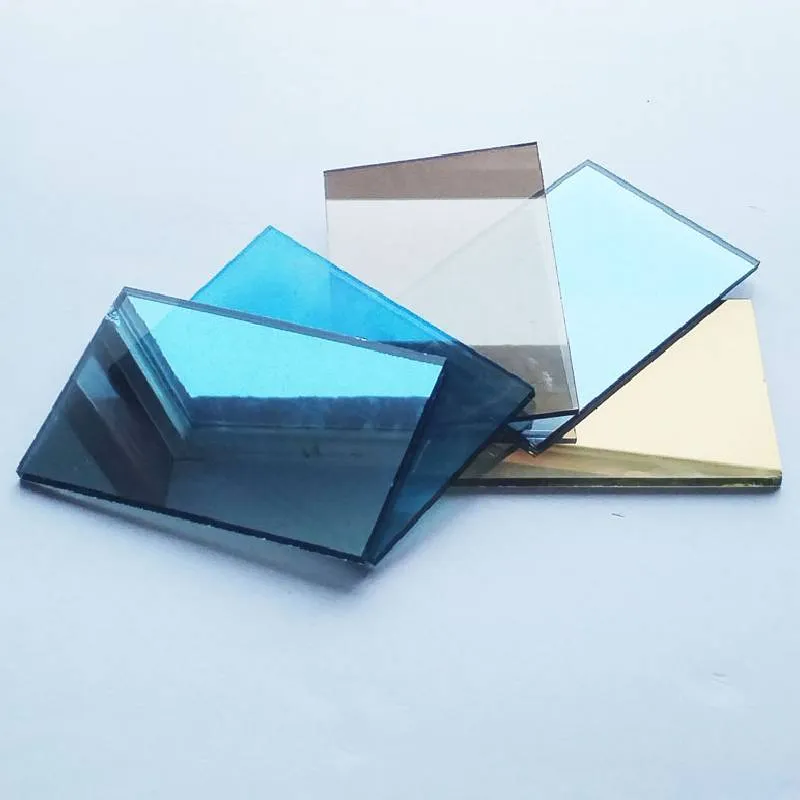The Difference Between Etched and Frosted Glass
Glass is an integral part of modern architecture and interior design, offering a balance of aesthetic appeal and functionality. Among the various types of glass treatments available, etched glass and frosted glass are two popular options. Though they may seem similar at first glance, they have distinct characteristics and applications. Understanding the differences between them can help you make informed decisions for your projects.
What is Etched Glass?
Etched glass is a type of glass that has been treated with an acid or abrasive medium to create designs, patterns, or textures onto its surface. The etching process effectively removes a layer of glass, resulting in a permanent and durable finish. This technique can produce intricate designs that range from simple lines to complex imagery, making etched glass a favorite for decorative purposes.
The applications of etched glass are diverse. It is often used for privacy screens, shower doors, and decorative panels in homes and commercial spaces. Additionally, because it can be customized with specific patterns or motifs, etched glass is frequently utilized in signage, awards, and other personalized items.
Etched glass is valued for its elegance and artistry. The depth of the etching can vary, allowing for a range of effects from subtle to bold. The light that passes through etched glass diffuses beautifully, creating a soft glow that enhances any interior setting. Furthermore, etched designs can be backlit, producing a stunning visual impact that draws attention to the craftsmanship involved.
What is Frosted Glass?
Frosted glass is produced by sandblasting or acid etching a piece of clear glass to create a translucent surface. The process typically results in a more uniform texture across the glass compared to the intricate designs often found in etched glass. The main purpose of frosted glass is to obscure visibility while still allowing light to pass through. It creates a soft, diffused appearance without complete transparency.
Frosted glass has become a popular choice for various applications, particularly in spaces where privacy is desired, such as bathroom windows, office partitions, and conference rooms. It strikes a balance between having light transmission and maintaining a sense of confidentiality in private spaces. Moreover, frosted glass is often used in furniture and decorative elements due to its contemporary look and minimalist appeal.
what is the difference between etched and frosted glass
While frosted glass does not typically feature the detailed designs that etched glass does, it can still be customized in terms of thickness, opacity, and texture, allowing flexibility in design. The aesthetic of frosted glass leans towards simplicity, making it a versatile choice for both residential and commercial environments.
Key Differences Between Etched and Frosted Glass
1. Aesthetic Detail The primary difference lies in the level of detail. Etched glass can showcase intricate designs, while frosted glass usually features a more uniform, softer surface.
2. Method of Production Etched glass is produced by removing a layer of glass through acidic substances or abrasives, whereas frosted glass is usually created by sandblasting or acid etching to create a matte finish.
3. Light Transmission Both types allow light to diffuse, but etched glass often has areas of transparency due to its patterns, whereas frosted glass provides a more consistent opacity across the surface.
4. Functionality Etched glass is often used for decorative purposes, while frosted glass is primarily chosen for privacy. That said, both types can serve functional roles in varying contexts.
5. Customization Etched glass offers more opportunity for detailed customization and artistic expression, whereas frosted glass is often limited to texture and opacity variations.
Conclusion
Choosing between etched and frosted glass ultimately depends on your specific needs and design goals. If you seek a unique artistic piece that enhances aesthetic appeal, etched glass is your go-to option. However, for practical applications where privacy and simplicity are paramount, frosted glass is likely the better choice. Understanding the distinct differences between these two types of glass treatments can enhance your design choices and lead to beautiful results in any setting.
 Afrikaans
Afrikaans  Albanian
Albanian  Amharic
Amharic  Arabic
Arabic  Armenian
Armenian  Azerbaijani
Azerbaijani  Basque
Basque  Belarusian
Belarusian  Bengali
Bengali  Bosnian
Bosnian  Bulgarian
Bulgarian  Catalan
Catalan  Cebuano
Cebuano  Corsican
Corsican  Croatian
Croatian  Czech
Czech  Danish
Danish  Dutch
Dutch  English
English  Esperanto
Esperanto  Estonian
Estonian  Finnish
Finnish  French
French  Frisian
Frisian  Galician
Galician  Georgian
Georgian  German
German  Greek
Greek  Gujarati
Gujarati  Haitian Creole
Haitian Creole  hausa
hausa  hawaiian
hawaiian  Hebrew
Hebrew  Hindi
Hindi  Miao
Miao  Hungarian
Hungarian  Icelandic
Icelandic  igbo
igbo  Indonesian
Indonesian  irish
irish  Italian
Italian  Japanese
Japanese  Javanese
Javanese  Kannada
Kannada  kazakh
kazakh  Khmer
Khmer  Rwandese
Rwandese  Korean
Korean  Kurdish
Kurdish  Kyrgyz
Kyrgyz  Lao
Lao  Latin
Latin  Latvian
Latvian  Lithuanian
Lithuanian  Luxembourgish
Luxembourgish  Macedonian
Macedonian  Malgashi
Malgashi  Malay
Malay  Malayalam
Malayalam  Maltese
Maltese  Maori
Maori  Marathi
Marathi  Mongolian
Mongolian  Myanmar
Myanmar  Nepali
Nepali  Norwegian
Norwegian  Norwegian
Norwegian  Occitan
Occitan  Pashto
Pashto  Persian
Persian  Polish
Polish  Portuguese
Portuguese  Punjabi
Punjabi  Romanian
Romanian  Russian
Russian  Samoan
Samoan  Scottish Gaelic
Scottish Gaelic  Serbian
Serbian  Sesotho
Sesotho  Shona
Shona  Sindhi
Sindhi  Sinhala
Sinhala  Slovak
Slovak  Slovenian
Slovenian  Somali
Somali  Spanish
Spanish  Sundanese
Sundanese  Swahili
Swahili  Swedish
Swedish  Tagalog
Tagalog  Tajik
Tajik  Tamil
Tamil  Tatar
Tatar  Telugu
Telugu  Thai
Thai  Turkish
Turkish  Turkmen
Turkmen  Ukrainian
Ukrainian  Urdu
Urdu  Uighur
Uighur  Uzbek
Uzbek  Vietnamese
Vietnamese  Welsh
Welsh  Bantu
Bantu  Yiddish
Yiddish  Yoruba
Yoruba  Zulu
Zulu 

